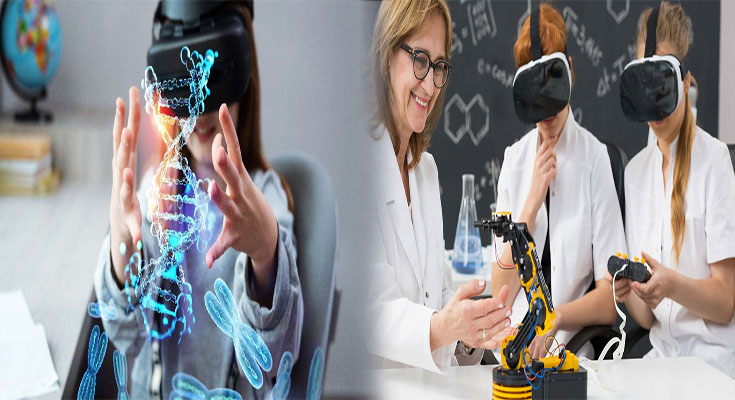Virtual Reality (VR) technology is revolutionizing the education sector and shaping the future of learning. By offering immersive and interactive experiences, VR has the potential to transform traditional educational methods, making learning more engaging, effective, and accessible. Here are some ways in which virtual reality is driving the evolution of the future education system:
1. Immersive Learning Environments
One of the most significant impacts of VR on education is the creation of immersive learning environments. VR technology allows students to step into realistic 3D simulations and scenarios, enabling them to explore historical landmarks, visit outer space, or dive into the human body. These immersive experiences bring learning to life, making complex concepts more tangible and fostering a deeper understanding of the subject matter.
2. Experiential Learning
Virtual reality enables experiential learning by providing students with hands-on experiences that would otherwise be impractical or impossible in a traditional classroom setting. Students can engage in virtual field trips, conduct scientific experiments, or practice real-world skills in a safe and controlled environment. This interactive approach to learning promotes active participation, critical thinking, and problem-solving skills.
3. Global Connectivity and Collaboration
VR technology has the potential to break down geographic barriers and connect students from around the world. Virtual reality platforms can facilitate global collaborations, cultural exchanges, and language learning by providing a shared virtual space where students can interact, communicate, and learn from each other’s perspectives. This global connectivity fosters a sense of belonging to a larger global community and promotes cultural understanding.
4. Accessibility and Inclusivity
Virtual reality can make education more accessible and inclusive for students with diverse learning needs. VR experiences can be tailored to accommodate different learning styles and cater to students with disabilities. The immersive nature of VR can provide a more engaging learning experience for students who struggle in traditional classroom settings, thus promoting inclusivity and addressing individual learning challenges.
5. Career Training and Professional Development
In the future education system, virtual reality will play a vital role in career training and professional development. VR simulations can be used to train students in vocational skills, such as healthcare procedures, engineering, or architectural design. Additionally, VR platforms can offer professionals opportunities for immersive training, skill enhancement, and continuous learning in various industries.
6. Personalized and Adaptive Learning
VR technology enables personalized and adaptive learning experiences by allowing educators to tailor content to individual student needs. AI-powered VR systems can analyze student performance and behavior within the virtual environment, providing personalized feedback, adaptive challenges, and customized learning paths. This approach ensures that each student receives targeted instruction to maximize their learning outcomes.
Virtual reality is poised to revolutionize the future of education by creating immersive learning environments, promoting experiential learning, fostering global connectivity, increasing accessibility and inclusivity, facilitating career training, and enabling personalized learning experiences. As VR becomes more integrated into the education system, it has the potential to reshape the way students learn and educators teach, ultimately preparing the next generation for the challenges and opportunities of the future.





